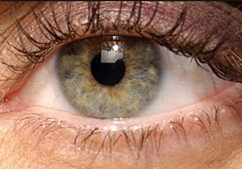Checking your eyes may lead to improved diagnosis for Mental Health Minneapolis

 Mental Health for your eyes | Eye tracking may lead us to an improved method of checks and balances to improved diagnosing in mental health. What does this mean?
Mental Health for your eyes | Eye tracking may lead us to an improved method of checks and balances to improved diagnosing in mental health. What does this mean?
Patients' eyes have long provided important clues to mental health clinicians on diagnosis and follow up med-checks. Enlarged pupils may be a sign of substance use, for example, and a distant stare might indicate dissociation in response to a certain topic.
Mental Health Information | Researchers are now investigating sophisticated clinical information from the eyes, and the results are showing promise for eventual application in aiding diagnosis and improvement of treatments.
One such method involves using an eye-tracking device to monitor the duration of a patient's gaze when presented with emotional stimuli, such as photos of happy or sad faces.
A study published last August in Psychiatry Research found that depressed patients maintained their gaze on happy faces for a shorter amount of time than healthy controls and patients with remitted depression. From the study:
A study in the August 2014 issue of Vision Research focused on involuntary eye movement as a potential marker of attention-deficit/hyperactivity disorder (ADHD). Researchers compared the rate of eye blinks and microsaccades (small, rapid movements of the eyes as they shift attention from one point to another) among 22 patients with ADHD and 22 healthy control subjects as they performed the Test of Variables of Attention (TOVA).
Each group performed the test twice in one day. The ADHD group completed the first test while they were unmedicated, and they performed the second test after taking their medication. The ADHD patients had significantly higher rates of blinks and microsaccades than controls, especially around the time that the stimulus appeared. These rates approached or reached normal levels, however, when the patients took the test while medicated.3
One of the study's authors, Moshe Fried, PhD, of Tel Aviv University, explained that visual attention can be allocated spatially (to a specific location in the visual field) or temporally (to a time interval when the individual anticipates that a visual stimulus will be shown). He and his colleagues focused on temporal allocation in their study.
“As microsaccades and blinks interfere with visual stimulus acquisition, both are normally suppressed while anticipating visual stimuli,” Fried said. Indeed, they found that this suppression was significantly stronger in control subjects versus patients with ADHD.
Because the medication used to treat ADHD is a stimulant, researchers expected (as observed) that it would increase arousal, thus reducing the rates of microsaccades and blinks. Such a test may have diagnostic value because it cannot be manipulated by subjects.
What is positive about this type of research is that individual prescribers that have ongoing relationships with their patients can add value through additional testing to make sure that they are more than subjectively being evaluated during checkups.
When recorded under resting conditions, rather than during a test of attention as in the ADHD study, blink rate may be used to detect another problem — mild cognitive impairment (MCI). MCI is thought to be a precursor to alzheimer's disease.
In addition to the assessment of gaze duration, researchers have also investigated the quality of eye movements as a characteristic of pathology. Additional information can be developed leading to many other diagnosis based on analysis of eye movements at regular intervals.
With more research and testing, it is worthy to note that we are moving forward with better and better ways to help those with mental health issues. The closer we get to ‘getting it right’ the better, time will tell how good we really are, bring on the studies and the data, many people are in need.


